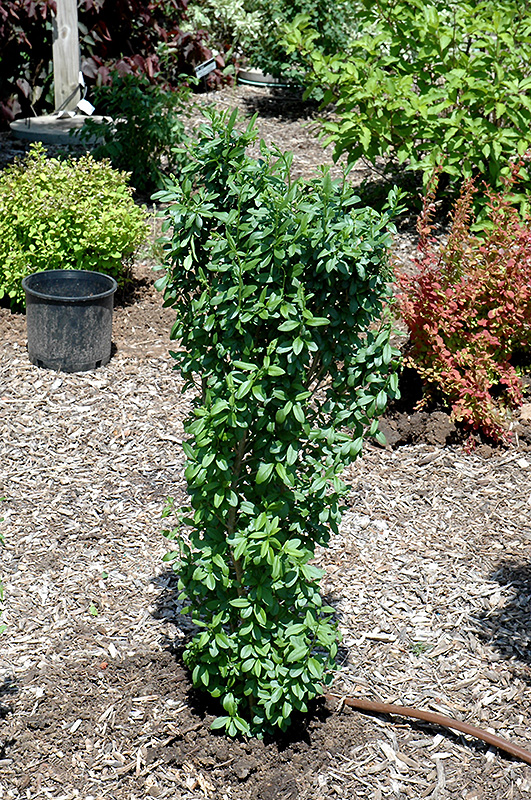
California Privet (Ligustrum ovalifolium) in Long Island Westbury Nassau County Jericho Mineola
Ligustrum ovalifolium is an evergreen Shrub growing to 4 m (13ft) by 3 m (9ft) at a medium rate. See above for USDA hardiness. It is hardy to UK zone 5 and is not frost tender. It is in leaf all year, in flower in July, and the seeds ripen in October. The species is hermaphrodite (has both male and female organs) and is pollinated by Insects.

Image California privet (Ligustrum ovalifolium) 558131 Images of Plants and Gardens
Scientific Name: Ligustrum ovalifolium Hassk. Family Name (Scientific and Common): Oleaceae, Olive Family Continent of Origin: Asia, particularly Japan Most Distinguishing Morphological Features of The Plant: California privet is a semi-evergreen Japanese shrub having malodorous flowers.

California privet, Ligustrum ovalifolium (Scrophulariales Oleaceae) 5272062
Privet plants ( Ligustrum spp.) are flowering evergreen shrubs commonly grown as hedges, which can also be grown as small, bushy trees depending on the specific variety. These classic plants include roughly 50 different species in the Ligustrum genus that can offer a classic look when running along a property border.
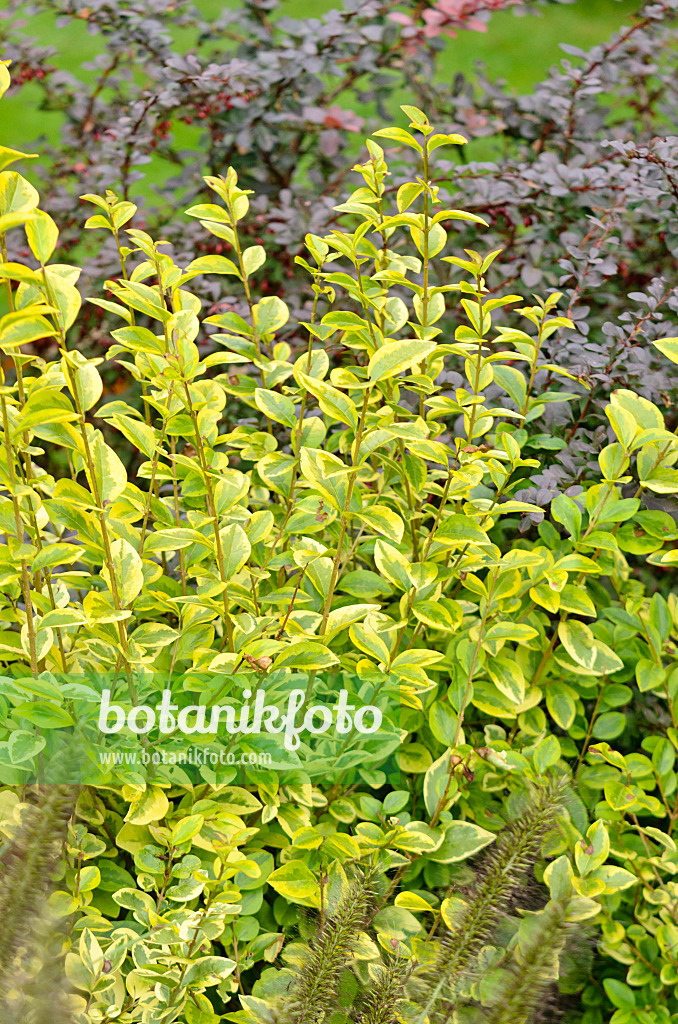
Image California privet (Ligustrum ovalifolium 'Aureum') 572044 Images of Plants and Gardens
Ligustrum ovalifolium California Privet » Large shrub can reach up to 15' high » Semi-erect stems » Great for hedging » Semi-evergreen leaves are a deep green » Large, 2-4" clusters of fragrant white flowers in June and July » Shiny black fruits attract songbirds Login for pricing Category: Shrub Hardiness Zone: 5-8 Height: 10-15 ft Spread: 7-9 ft
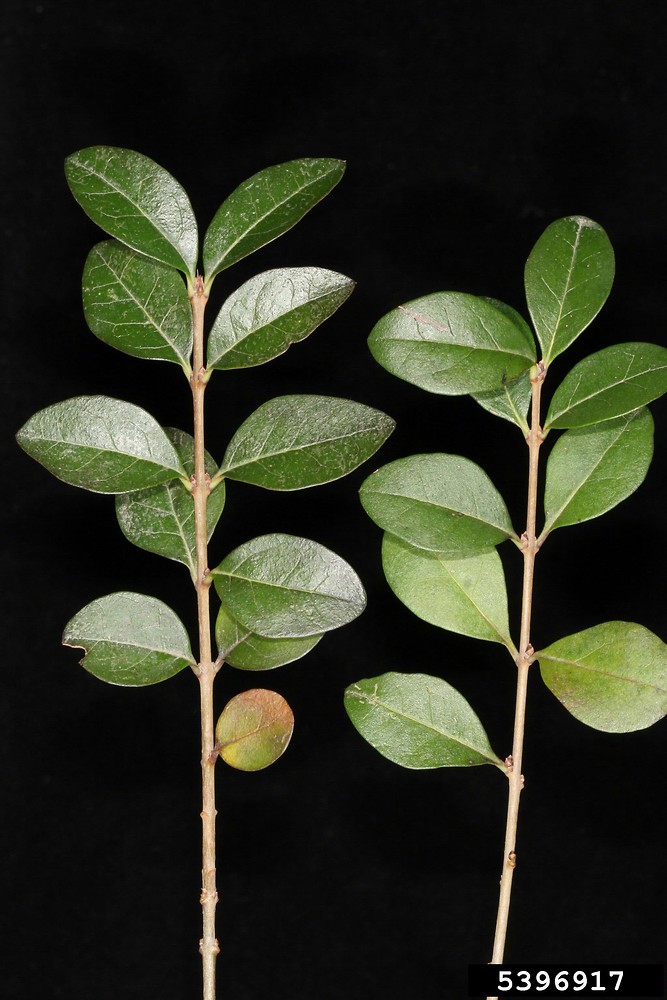
Ligustrum ovalifolium (California privet) Go Botany
Ligustrum ovalifolium, commonly called California Privet, is a fast-growing semi-evergreen shrub that makes a fine choice for a hedge. In early spring, the shrub is adorned with small white flowers. The flowers mature to shiny black fruits that feed songbirds.

Ligustrum ovalifolium (California Privet) Shrub, 3 Size Container in 2022 Shrubs, Plants
Ligustrum is a genus of about 50 species of flowering plants of the Oleaceae family. These plants, which are popularly known as privets, can be either evergreen or deciduous and grow as shrubs and small trees. The size of these plants varies depending on their species but most of the popular gardening species are large shrubs.

Ligustrum ovalifolium (California privet) (Ligustrum medium)
Ligustrum ovalifolium Pronunciation: lig-GUS-trum o-val-ee-FOH-lee-um SKU #00922 5-9 Good to grow! 7 Change Location Find In Store OVERVIEW DETAILS STYLE CARE This Plant's Growing Zones: 5-9 Your USDA Cold Hardiness Zone: 7 Good to grow! Change Location Be Inspired The Top 10 Best Shrubs for Hedges Buy Online

Tall Narrow California Ligustrum (Privet) Hedge
Once established, privet is drought tolerant. Privet is hardy in zones 6 to 8 and is usually evergreen in the warmer zones. Above: Ligustrum ovalifolium is known as "California privet," but it is a mystery why. It is a native of Japan and got to the United States via the United Kingdom, where it had been introduced in the late 1800s.

California privet (Ligustrum ovalifolium 'Aureum' Stock Photo Alamy
California privet is a leggy shrub with glossy green, oval, opposite leaves and white flowers ( bloom time June-July) that attract butterflies and later mature into black berries.

Shop California Privet Hedge, Ligustrum Ovalifolium, online. Create a formal privacy hedge with
Published on April 3, 2023 In This Article View All Plant Attributes Privet Care Types of Privet Pruning Overwintering Photo: Southern Living/Vlasova Evgeniya Although one species makes a fine landscape tree, privets are first and foremost hedge plants. They take well to shearing and can be clipped into almost any shape.

Ligustrum ovalifolium (California privet) (Ligustrum medium)
Ligustrum ovalifolium is a tree or shrub that is not native to California. Toxicity: Do not eat the leaf or fruit of this plant. Calflora: Information on California plants for education, research and conservation, with data contributed by public and private institutions and individuals. [web application]. 2023.

California Privet (Ligustrum ovalifolium) in Long Island Westbury Nassau County Jericho Mineola
Ligustrum ovalifolium, also known as Korean privet, [1] California privet, garden privet, [2] and oval-leaved privet, is a species of flowering plant in the olive family Oleaceae. [3] The species is native to Japan and Korea. [3] Description

Ligustrum ovalifolium (California privet) (Ligustrum medium)
Scientific name: Ligustrum ovalifolium Description California Privet is widely used as a sheared hedging plant in the landscape. Morphology: This is broadleaf evergreen shrub which can quickly grow to 15 feet in height and 8 feet in width. It bears rich dark green leaves which are 1"-2.5" long with an elliptic-ovate shape.
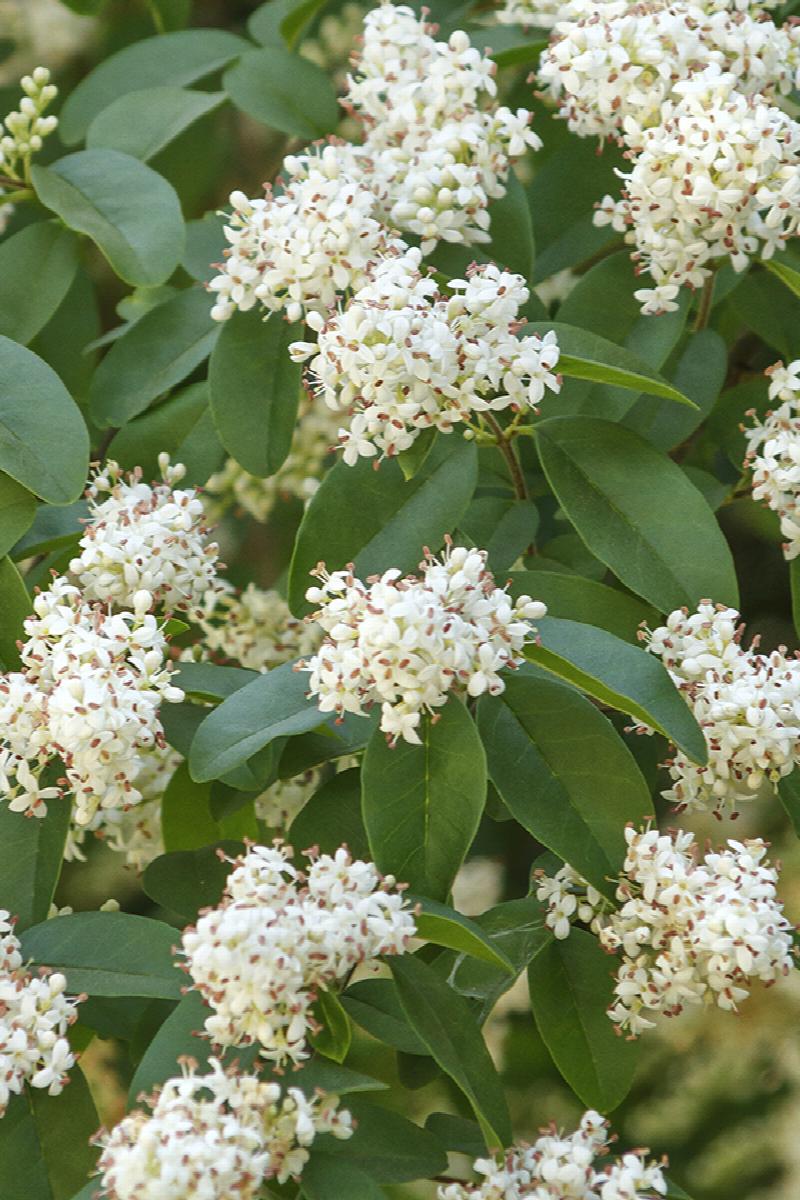
California Privet, Ligustrum ovalifolium, Monrovia Plant
Ligustrum ovalifolium ( California Privet ) This is a bushy deciduous, sometimes semi-evergreen shrub most often used for shrub borders and hedging. Leaves are rich dark green on top and yellowish green on bottom, elliptic-ovate to elliptic-oblong, 1 to 2 1/2 inches long. Flat white heavy-scented flowers are held in erect terminal panicles to 2.
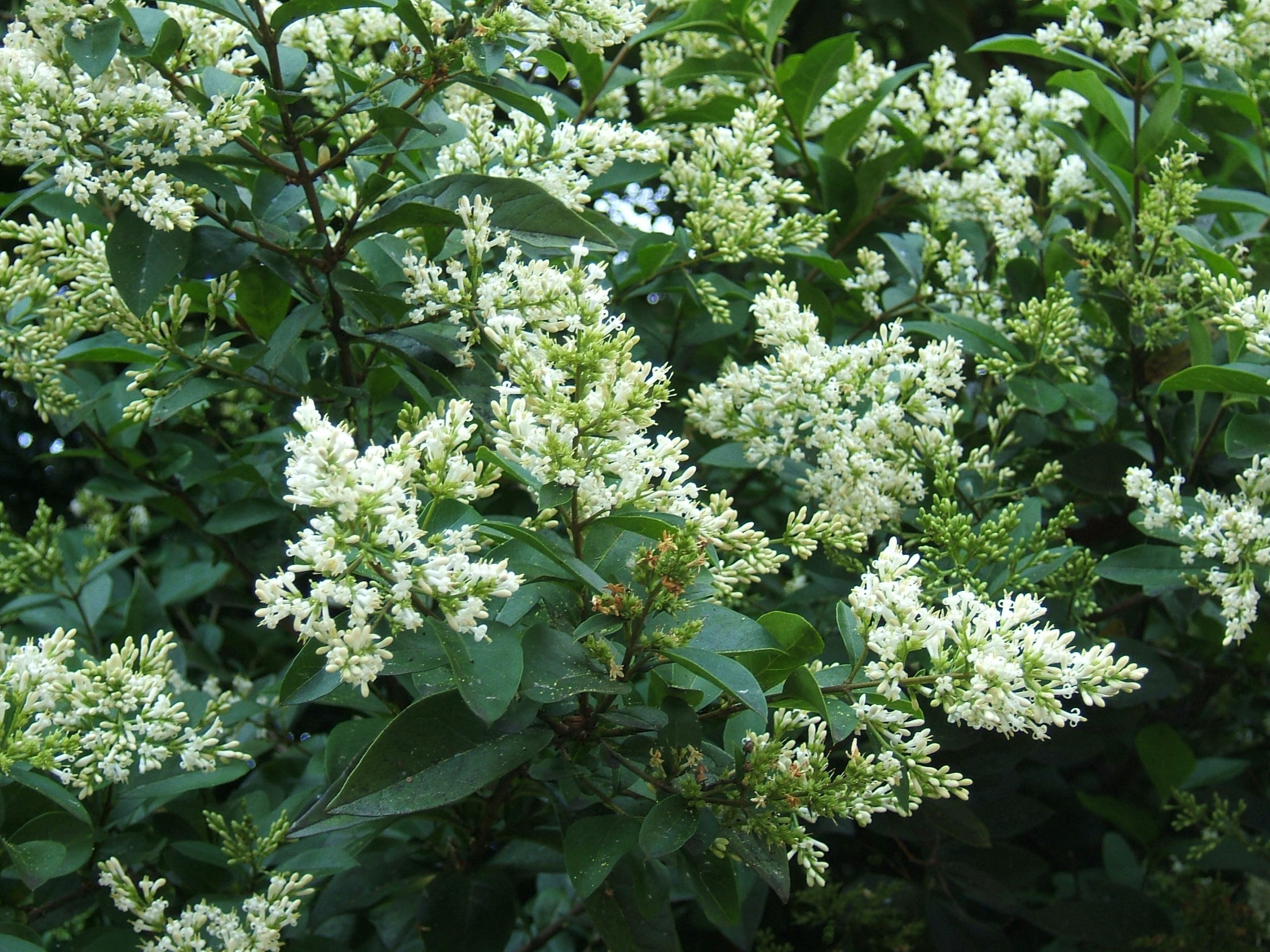
Ligustrum ovalifolium / California privet Consejos para mi huerto
California Privet is recommended for the following landscape applications; Mass Planting; Hedges/Screening; Planting & Growing. California Privet will grow to be about 10 feet tall at maturity, with a spread of 10 feet. It has a low canopy with a typical clearance of 1 foot from the ground, and is suitable for planting under power lines.

California privet, Ligustrum ovalifolium (Scrophulariales Oleaceae) 5446891
Ligustrum lucidum (glossy privet) is a shrub/tree (family Oleaceae) with white flowers and shiny oval-shaped leaves found in the San Francisco Bay area, Sacramento Valley, coastal ranges and southwestern ranges of California. It is native to China, Japan and Korea. It favors grasslands, woodlands and riparian and bottomland habitat.